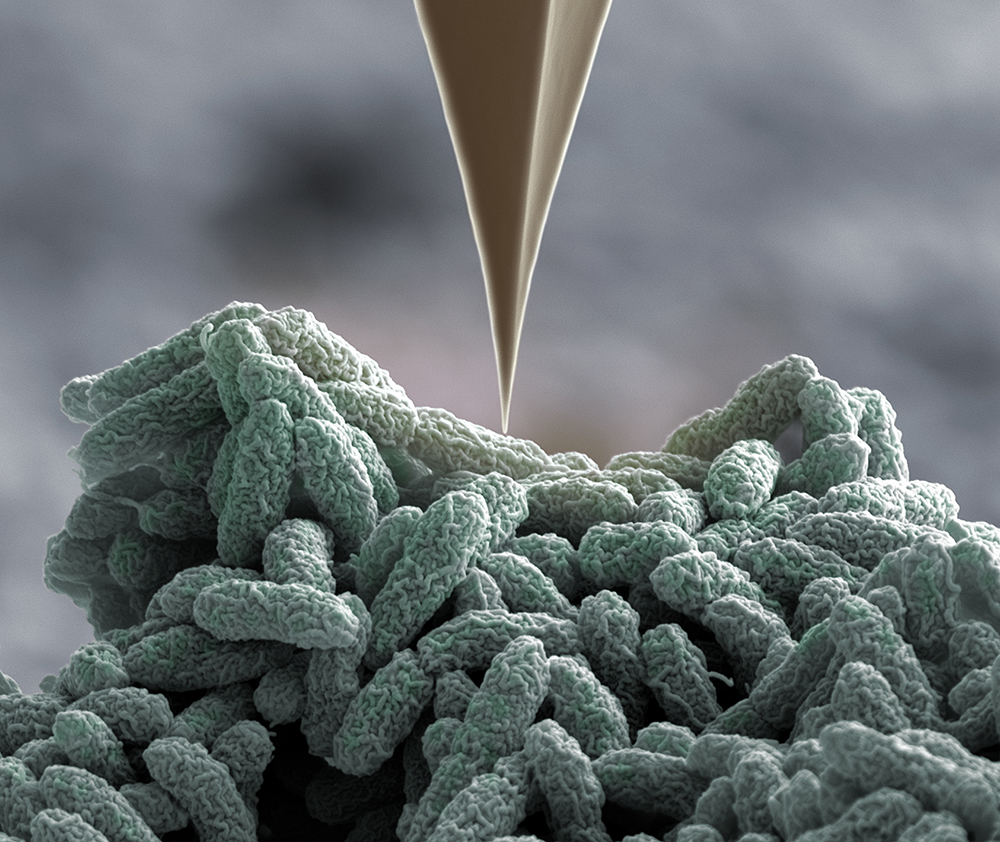In the world of microbes, peaceful coexistence goes hand in hand with fierce competition for nutrients and space. Certain bacteria outcompete rivals and fend off attackers by injecting them with a lethal cocktail using tiny, nano-sized spearguns, known as type VI secretion systems (T6SS).
Bacteria respond to cell envelope damage
The research group led by Prof. Marek Basler at the Biozentrum, University of Basel, has been studying the T6SS of different bacterial species, including Pseudomonas aeruginosa, for many years. “We knew that these bacteria use their T6SS to fire back when attacked”, explains Basler. “But we did not know what exactly triggers the assembly of the nano-speargun: the contact with neighbors, toxic molecules, or simply cell damage?”
In close collaboration with Roderick Lim, Argovia Professor for Nanobiology at the Biozentrum and the Swiss Nanoscience Institute (SNI), the researchers have now demonstrated that Pseudomonas aeruginosa responds to ruptures in the outer membrane – initiated by mechanical force, such as poking with a sharp tip. The study has been published in “Science Advances”.



